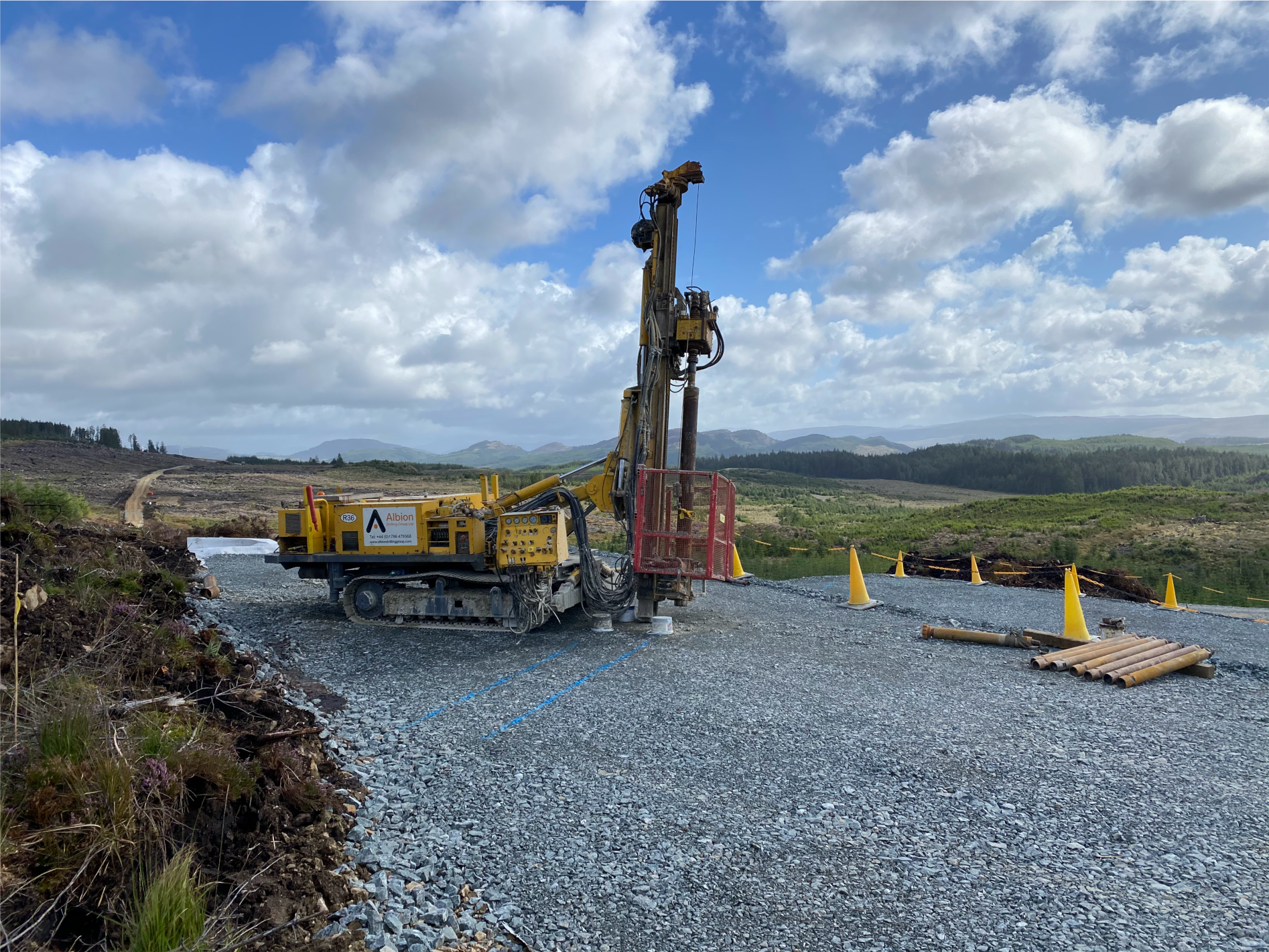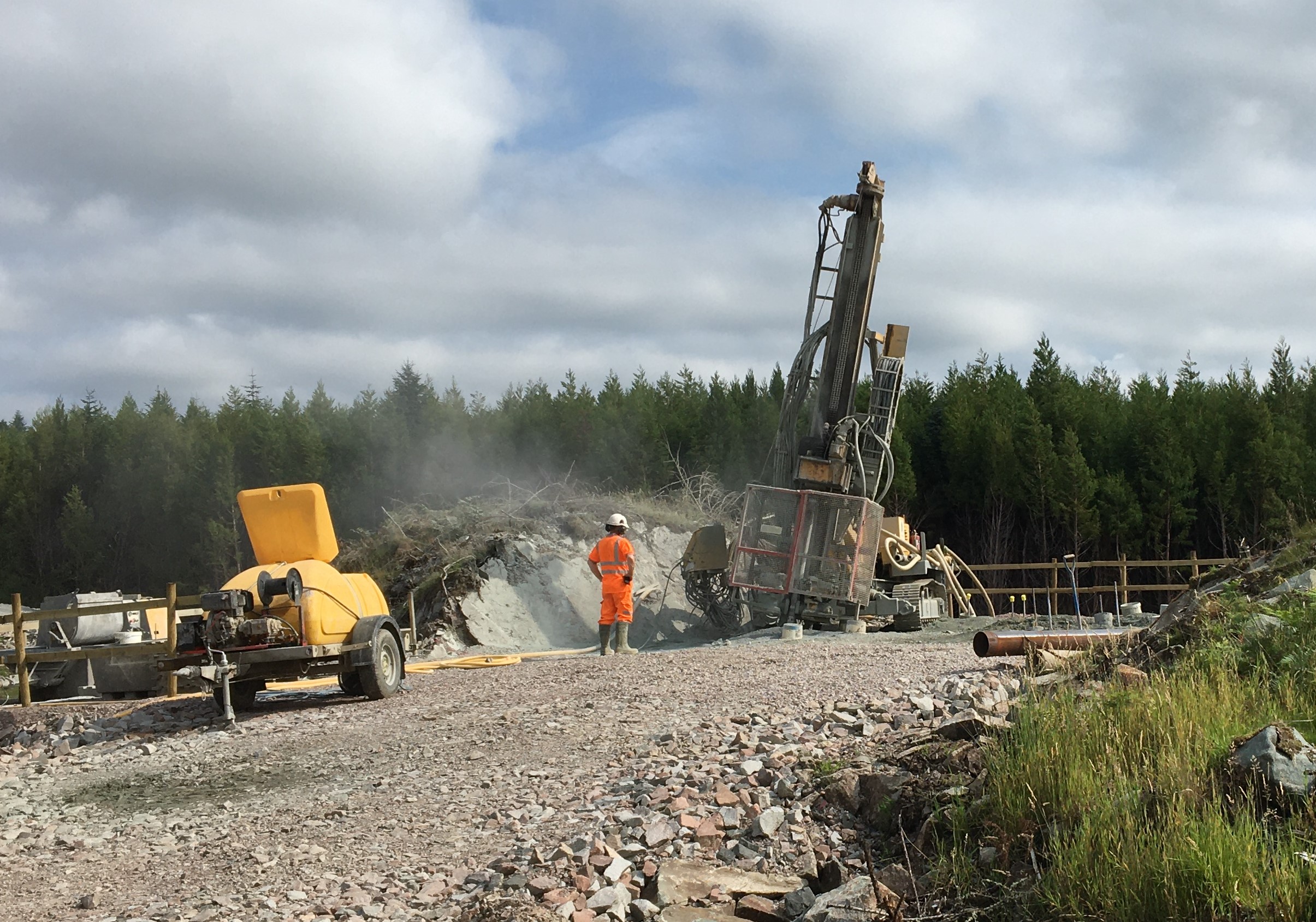
Client: Scottish & Southern Electricity Networks
Main Contractor: Balfour Beatty Power Transmission and Distribution
Contract Duration: 12 Weeks
Summary of Albion Works
- Design and Installation of 256No. 220mm ODEX Mini Piles
- Installation of 17No. Rock Bolts
 Description of Works
Description of Works
The works were completed within phase one of the Inveraray to Crossaig new build double circuit 275kV transmission line which routes from Inveraray to Lochgilphead. With a total of 131No. new towers being constructed on the project, Albion Drilling Group Ltd were employed to design and install Mini Piles for a selection of the towers that required piled foundations.
In liaison with the main contractor, Albion Drilling Group Ltd engaged our external design consultant to design the piled foundations for 16No. of the tower locations, with each foundation being designed individually to meet the respective site and loading conditions that applied. Design objectives included the sizing of the foundation pads, the identification of suitable pile reinforcement, and the determination of the pile lengths.
In summary of the works, Albion Drilling Group Ltd installed a total 259No. 220mm ODEX Mini Piles, which were distributed as 16No. piles at each of the 16 towers allocated, together with 3No. sacrificial piles which were installed for design verification purposes. Pile lengths varied from 7.0m to 17.0m, with pile reinforcement bars ranging from 25mm to 50mm. Pile cages were also utilised where required to accommodate the shear force requirements within the piles.
The works were completed utilising 2No Atlas-Copco Mustang 9H-5 drill rigs over a 12 week period, with one rig being used throughout and the second rig being phased in and phased out as necessary to deal with peak workloads. The use of the 220mm ODEX system allowed the drillers, in consultation with the design team, to alter the design lengths as necessary and adapt to the varying ground conditions throughout the drilling process. This dynamic approach and variable construction process greatly reduced the requirement to halt the works in cases where a design review may have otherwise led to the works being delayed, whilst additional or alternative materials were acquired.
The works were completed on time and on budget.
